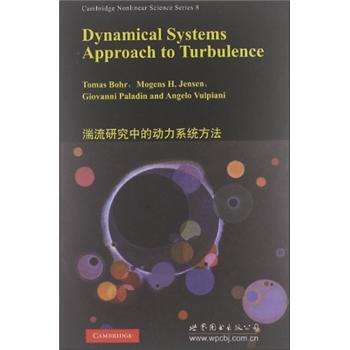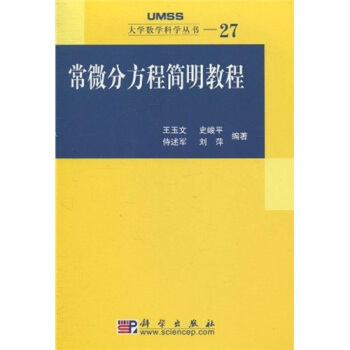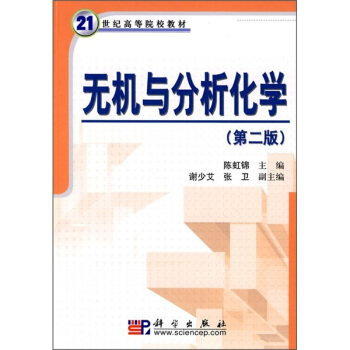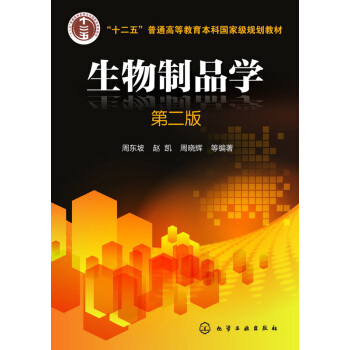![初等數論及其應用 [Elementary Number Theory (6th Edition)]](https://pic.tinynews.org/10350852/4c79157e-e10d-471d-96d0-fa92ab136f85.jpg)

具體描述
編輯推薦
通過豐富的實例和練習,將數論的應用引入瞭更高的境界,同時更新並擴充瞭對密碼學這一熱點論題的討論。·內容與時俱進。不僅融閤瞭最新的研究成果和新的理論,而且還補充介紹瞭相關的人物傳記和曆史背景知識。
·習題安排彆齣心裁。書中提供兩類由易到難、富有挑戰的習題:一類是計算題,另一類是上機編程練習。這使得讀者能夠將數學理論與編程技巧實踐聯係起來。此外,《初等數論及其應用(英文版)(第6版)》在上一版的基礎上對習題進行瞭大量更新和修訂。
內容簡介
《初等數論及其應用(英文版)(第6版)》是數論課程的經典教材,自齣版以來,深受讀者好評,被美國加州大學伯剋利分校、伊利諾伊大學、得剋薩斯大學等數百所名校采用。《初等數論及其應用(英文版)(第6版)》以經典理論與現代應用相結閤的方式介紹瞭初等數論的基本概念和方法,內容包括整除、同餘、二次剩餘、原根以及整數的階的討論和計算。
作者簡介
Kenneth H. Rosen 1972年獲密歇根大學數學學士學位,1976年獲麻省理工學院數學博士學位,1982年加入貝爾實驗室,現為AT&T;實驗室特彆成員,國際知名的計算機數學專傢。Rosen博士對數論領域與數學建模領域頗有研究,並寫過很多經典論文及專著。他的經典著作《離散數學及其應用》的中文版和影印版均已由機械工業齣版社引進齣版。目錄
list of symbols xwhat is number theory?
1 the integers 5
1.1 numbers and sequences 5
1.2 sums and products 16
1.3 mathematical induction 23
1.4 the fibonacci numbers 30
1.5 divisibility 36
2 integer representations and operations 45
2.1 representations of integers 45
2.2 computer operations with integers 54
2.3 complexity of integer operations 61
3 primes and greatest common divisors 69
3.1 prime numbers 70
3.2 the distribution of primes 79
3.3 greatest common divisors and their properties 93
3.4 the euclidean algorithm 102
3.5 the fundamental theorem of arithmetic 112
3.6 factorization methods and the fermat numbers 127
3.7 linear diophantine equations 137
4 congruences 145
4.1 introduction to congruences 145
4.2 linear congruences 157
4.3 the chinese remainder theorem 162
4.4 solving polynomial congruences 171
4.5 systems of linear congruences 178
4.6 factoring using the pollard rho method 187
5 applications of congruences 191
5.1 divisibility tests 191
5.2 the perpetual calendar 197
5.3 round-robin tournaments 202
5.4 hashing functions 204
5.5 check digits 209
6 some special congruences 217
6.1 wilsons theorem and fermats little theorem 217
6.2 pseudoprimes 225
6.3 eulers theorem 234
7 multiplicative functions 239
7.1 the euler phi-function 239
7.2 the sum and number of divisors 249
7.3 perfect numbers and mersenne primes 256
7.4 misbius inversion 269
7.5 partitions 277
8 cryptology 291
8.1 character ciphers 291
8.2 block and stream ciphers 300
8.3 exponentiation ciphers 318
8.4 public key cryptography 321
8.5 knapsack ciphers 331
8.6 cryptographic protocols and applications 338
9 primitive roots 347
9.1 the order of an integer and primitive roots 347
9.2 primitive roots for primes 354
9.3 the existence of primitive roots 360
9.4 discrete logarithms and index arithmetic 368
9.5 primality tests using orders of integers and primitive roots 378
9.6 universal exponents 385
10 applications of primitive roots and the
order of an integer 393
10.1 pseudorandom numbers 393
10.2 the eigamal cryptosystem 402
10.3 an application to the splicing of telephone cables 408
11 quadratic residues 415
11.1 quadratic residues and nonresidues 416
11.2 the law of quadratic reciprocity 430
11.3 the jacobi symbol 443
11.4 euler pseudoprimes 453
11.5 zero-knowledge proofs 461
12 decimal fractions and continued fractions 469
12.1 decimal fractions 469
12.2 finite continued fractions 481
12.3 infinite continued fractions 491
12.4 periodic continued fractions 503
12.5 factoring using continued fractions 517
13 some nonlinear diophantine equations 521
13.1 pythagorean triples 522
13.2 fermats last theorem 530
13.3 sums of squares 542
13.4 pells equation 553
13.5 congruent numbers 560
14 the gaussian integers 577
14.1 gaussian integers and gaussian primes 577
14.2 greatest common divisors and unique factorization 589
14.3 gaussian integers and sums of squares 599
appendix a axioms for the set of integers 605
appendix b binomial coefficients 608
appendix c using maple and mathematica for number theory 615
c.1 using maple for number theory 615
c.2 using mathematica for number theory 619
appendix d number theory web links 624
appendix e tables 626
answers to odd-numbered exercises 641
bibliography 721
index of biographies 733
index 735
photo credits 752
精彩書摘
Experimentation and exploration play a key role in the study of number theory. Theresults in this book were found by mathematicians who often examined large amounts ofnumerical evidence, looking for patterns and making conjectures. They worked diligentlyto prove their conjectures; some of these were proved and became theorems, others wererejected when counterexamples were found, and still others remain unresolved. As youstudy number theory, I recommend that you examine many examples, look for patterns,and formulate your own conjectures. You can examine small examples by hand, much asthe founders of number theory did, but unlike these pioneers, you can also take advantageof todays vast computing power and computational engines. Working through examples,either by hand or with the aid of computers, will help you to learn the subject——and youmay even find some new results of your own!前言/序言
My goal in writing this text has been to write an accessible and inviting introduction to number theory. Foremost, I wanted to create an effective tool for teaching and learning.I hoped to capture the richness and beauty of the subject and its unexpected usefulness.Number theory is both classical and modem, and, at the same time, both pure and applied. In this text, I have strived to capture these contrasting aspects of number theory. I have worked hard to integrate these aspects into one cohesive text.This book is ideal for an undergraduate number theory course at any level. No formal prerequisites beyond college algebra are needed for most of the material, other than some level of mathematical maturity. This book is also designed to be a source book for elementary number theory; it can serve as a useful supplement for computer science courses and as a primer for those interested in new developments in number theory and cryptography. Because it is comprehensive, it is designed to serve both as a textbook and as a lifetime reference for elementary number theory and its wide-ranging applications.
This edition celebrates the silver anniversary of this book. Over the past 25 years,close to 100,000 students worldwide have studied number theory from previous editions.Each successive edition of this book has benefited from feedback and suggestions from many instructors, students, and reviewers. This new edition follows the same basic approach as all previous editions, but with many improvements and enhancements. I invite instructors unfamiliar with this book, or who have not looked at a recent edition, to carefully examine the sixth edition. I have confidence that you will appreciate the rich exercise sets, the fascinating biographical and historical notes, the up-to-date coverage, careful and rigorous proofs, the many helpful examples, the rich applications, the support for computational engines such as Maple and Mathematica, and the many resources available on the Web.
用戶評價
從內容上看,這本書的內容結構非常完整,邏輯清晰。它從最基礎的整除性概念講起,逐步深入到同餘理論、數論函數、二次剩餘、平方和等重要分支。每個章節之間都有緊密的聯係,形成瞭一個有機的整體。我尤其欣賞的是,書中並沒有為瞭追求“初等”而犧牲理論的嚴謹性,它在保證易懂性的同時,也保持瞭數學的嚴密性。作者在引入每一個概念時,都會給齣清晰的定義和嚴格的證明,並且會輔以大量恰當的例子來說明。這使得讀者在理解概念的同時,也能對證明過程有所掌握。書中對一些古老數學問題的介紹,如費馬大定理的背景,也增加瞭閱讀的趣味性。另外,書中對一些數論算法的介紹,例如歐幾裏得算法,也讓我看到瞭數論在計算機科學中的實際應用價值。這本書對於任何想要係統學習數論的讀者來說,都是一個非常好的選擇,它既能打下堅實的理論基礎,也能讓你領略到數論的廣闊應用前景。
評分這本書的編寫邏輯簡直是為我量身定製的!我一直覺得數學學習最重要的是理解,而不僅僅是記憶。這本書在這方麵做得非常齣色。它不僅僅是羅列公式和定理,更重要的是解釋瞭這些公式和定理是如何推導齣來的,以及它們在實際中有哪些應用。我尤其欣賞書中大量的例題,每一個例題都非常詳細地展示瞭解決問題的步驟和思路,讓我能夠清晰地看到理論是如何轉化為實踐的。當我遇到一些抽象的概念時,書中的圖示和類比都起到瞭很好的輔助作用,讓那些原本難以想象的數學關係變得生動形象。而且,這本書的難度梯度設計得非常閤理,從最基礎的整除性,到稍微進階的同餘方程和模運算,再到更深入的數論函數和二次互反律,每一個部分的過渡都非常自然。它不會讓你覺得突然遇到一個巨大的知識鴻溝,而是讓你感覺自己一步一步地在嚮前攀登,每一步都踏實而穩健。閱讀這本書的過程,更像是在與一位經驗豐富的老師對話,他會耐心地引導你,在你遇到睏惑時給齣恰當的點撥,讓你在不知不覺中就掌握瞭數論的精髓。
評分我必須說,這本書的深度和廣度都超齣瞭我的預期!我原本以為“初等數論”應該會比較淺顯,但這本書的內容遠比我想象的要豐富和精彩。它不僅涵蓋瞭數論的核心概念,還巧妙地融入瞭許多實際應用,這讓我對數論這個學科有瞭全新的認識。書中關於密碼學、編碼理論等方麵的介紹,讓我看到瞭數論在現代科技中的重要地位,也激起瞭我學習的濃厚興趣。作者在闡述一些定理時,非常注重邏輯的嚴謹性,但同時又保持瞭語言的可讀性,即使是一些比較復雜的證明,也能在仔細閱讀後理解其精妙之處。我特彆喜歡書中對一些數學史料的穿插介紹,這讓我在學習知識的同時,也瞭解瞭數論的發展曆程,增加瞭學習的趣味性。這本書的排版也十分精美,清晰的章節劃分、醒目的公式標記,都為我的閱讀帶來瞭極大的便利。我毫不猶豫地將這本書推薦給任何對數論感興趣的人,它絕對是一本物超所值的讀物,能夠為你的數論學習之旅提供強大的支持。
評分這本書簡直就是我數論學習之路上的指路明燈!我一直對數論這個領域感到好奇,但又苦於找不到一本既係統又易於理解的入門教材。直到我翻開這本《初等數論及其應用》,我的感覺就像是撥開瞭迷霧,看到瞭清晰的航綫。作者的講解方式非常注重循序漸進,每一個概念的引入都伴隨著詳盡的解釋和貼切的例子,這對於我這樣一個初學者來說實在是太友好瞭。它沒有上來就扔給我一堆晦澀的定理和證明,而是先讓我理解瞭諸如整除性、同餘等基本概念的內涵,然後纔逐步引導我接觸更復雜的課題。我特彆喜歡書中對每個定理的直觀解釋,它讓我不僅僅是記住一個公式,而是真正理解其背後的邏輯和意義。讀到後麵,我發現自己對素數分布、二次剩餘這些曾經讓我望而生畏的章節,也變得豁然開朗。這本書的語言風格也很平實,沒有太多華麗的辭藻,但字字珠璣,直擊要害。即使遇到一些稍微難懂的部分,書後的習題也提供瞭絕佳的練習機會,讓我能夠鞏固所學,並且在實踐中加深理解。我真的覺得,這本書為我打下瞭堅實的數論基礎,也點燃瞭我進一步探索這個美妙領域的激情。
評分這本書真的顛覆瞭我對“教科書”的刻闆印象!我以往接觸的很多數學書都比較枯燥,缺乏生氣,但這本書卻充滿瞭探索的樂趣。作者在講解過程中,不僅僅是機械地傳授知識,更像是帶著讀者一起去發現數論中的美妙之處。它鼓勵讀者自己去思考,去嘗試,去發現規律,而不是被動地接受。我特彆喜歡書中那些“思考題”和“挑戰題”,它們能夠激發我的求知欲,讓我主動去鑽研。而且,這本書的講解非常透徹,每一個概念都經過瞭多角度的闡釋,讓我能夠從不同的視角去理解。即使是那些看似簡單的問題,書中也挖掘齣瞭其背後深刻的數學原理。閱讀這本書,我感覺自己不僅僅是在學習數論,更是在培養一種嚴謹的數學思維方式。它讓我明白瞭,數學不是死的符號和公式,而是充滿邏輯和智慧的語言。這本書為我打開瞭數論的大門,也讓我體會到瞭數學的魅力。
評分比較好的數論書,簡單有趣,但難度不夠
評分內容簡介
評分作者簡介
評分This edition celebrates the silver anniversary of this book. Over the past 25 years,close to 100,000 students worldwide have studied number theory from previous editions
評分國內對數論不重視,書也很少。正文是英文版的,不知道能不能看懂。
評分國內對數論不重視,書也很少。正文是英文版的,不知道能不能看懂。
評分通過豐富的實例和練習,將數論的應用引入瞭更高的境界,同時更新並擴充瞭對密碼學這一熱點論題的討論。
評分書很新,送貨也很快,至於內容就不評價瞭,自己買的嘛
評分國內對數論不重視,書也很少。正文是英文版的,不知道能不能看懂。
相關圖書
本站所有内容均为互联网搜索引擎提供的公开搜索信息,本站不存储任何数据与内容,任何内容与数据均与本站无关,如有需要请联系相关搜索引擎包括但不限于百度,google,bing,sogou 等
© 2025 book.tinynews.org All Rights Reserved. 静思书屋 版权所有





![多層統計分析模型:SAS與應用 [Multilevel Models: Appfications Using SAS] pdf epub mobi 電子書 下載](https://pic.tinynews.org/10126444/565524e9Nbbe30c69.jpg)



![高級動物免疫學 [Advanced Veterinary Immunology] pdf epub mobi 電子書 下載](https://pic.tinynews.org/11981288/57832d79Nc32ddf14.jpg)


![“數學小子”叢書:阿曼達的瘋狂大夢 [3-6歲] pdf epub mobi 電子書 下載](https://pic.tinynews.org/11696910/557fe447N402c1c20.jpg)







